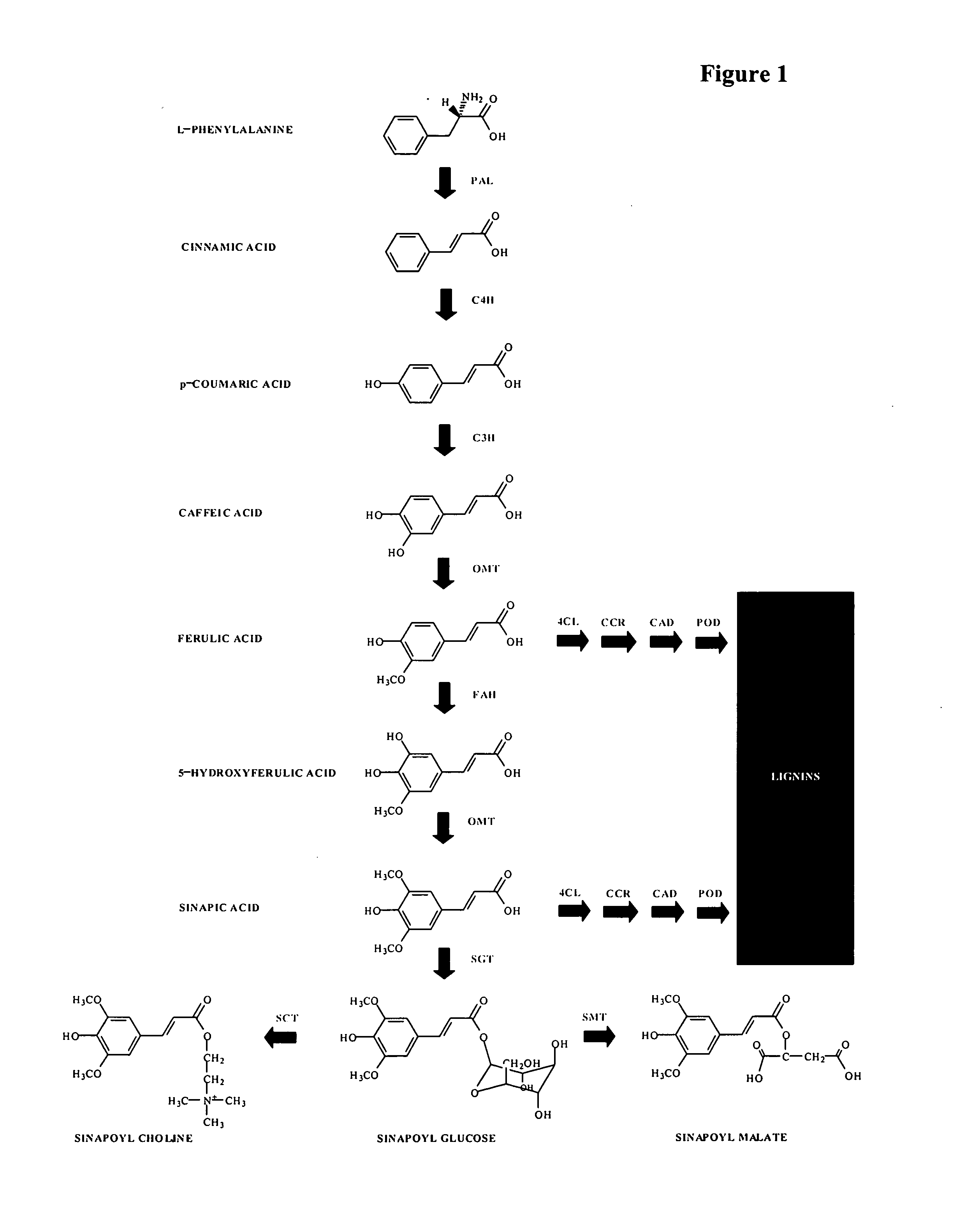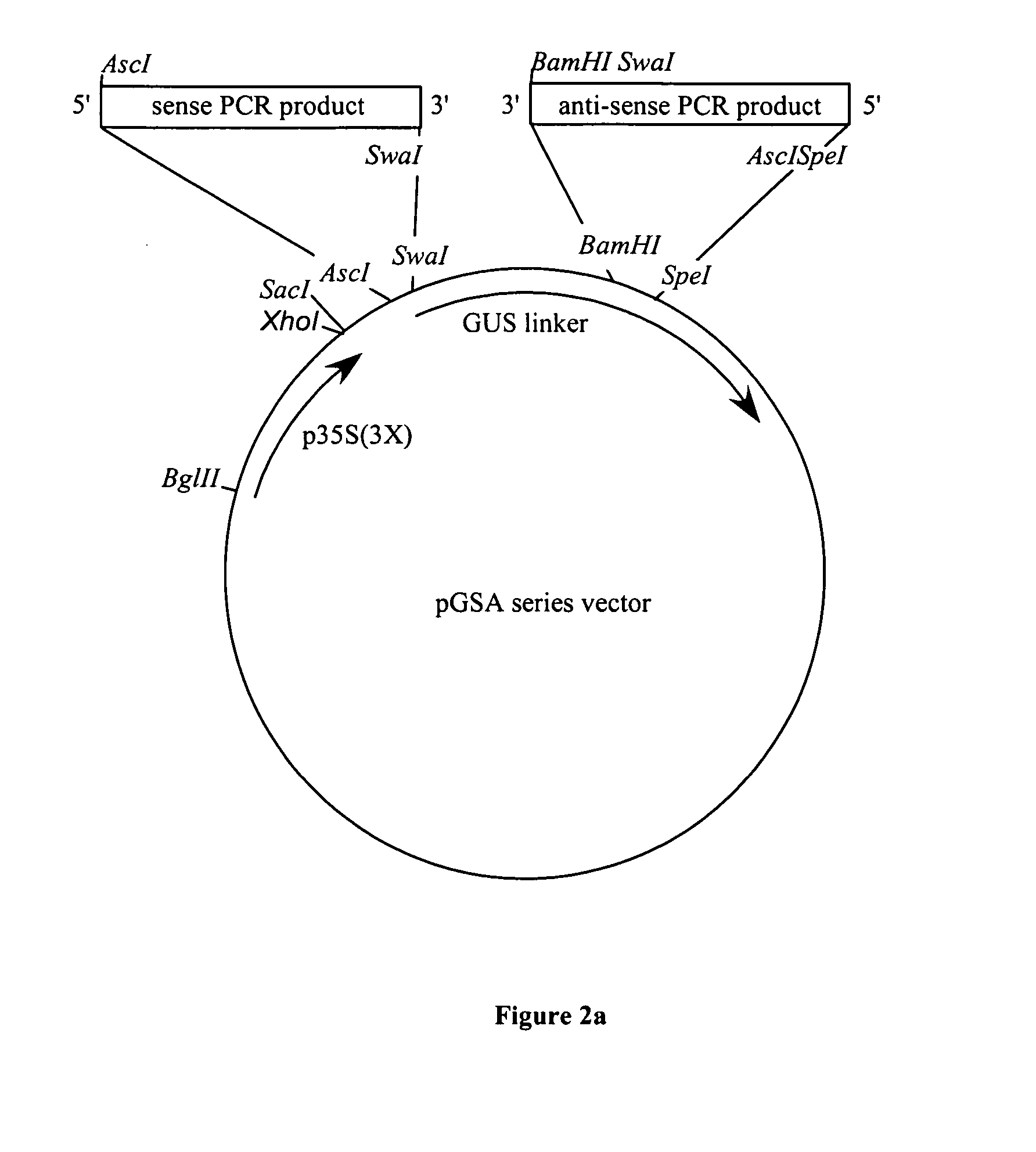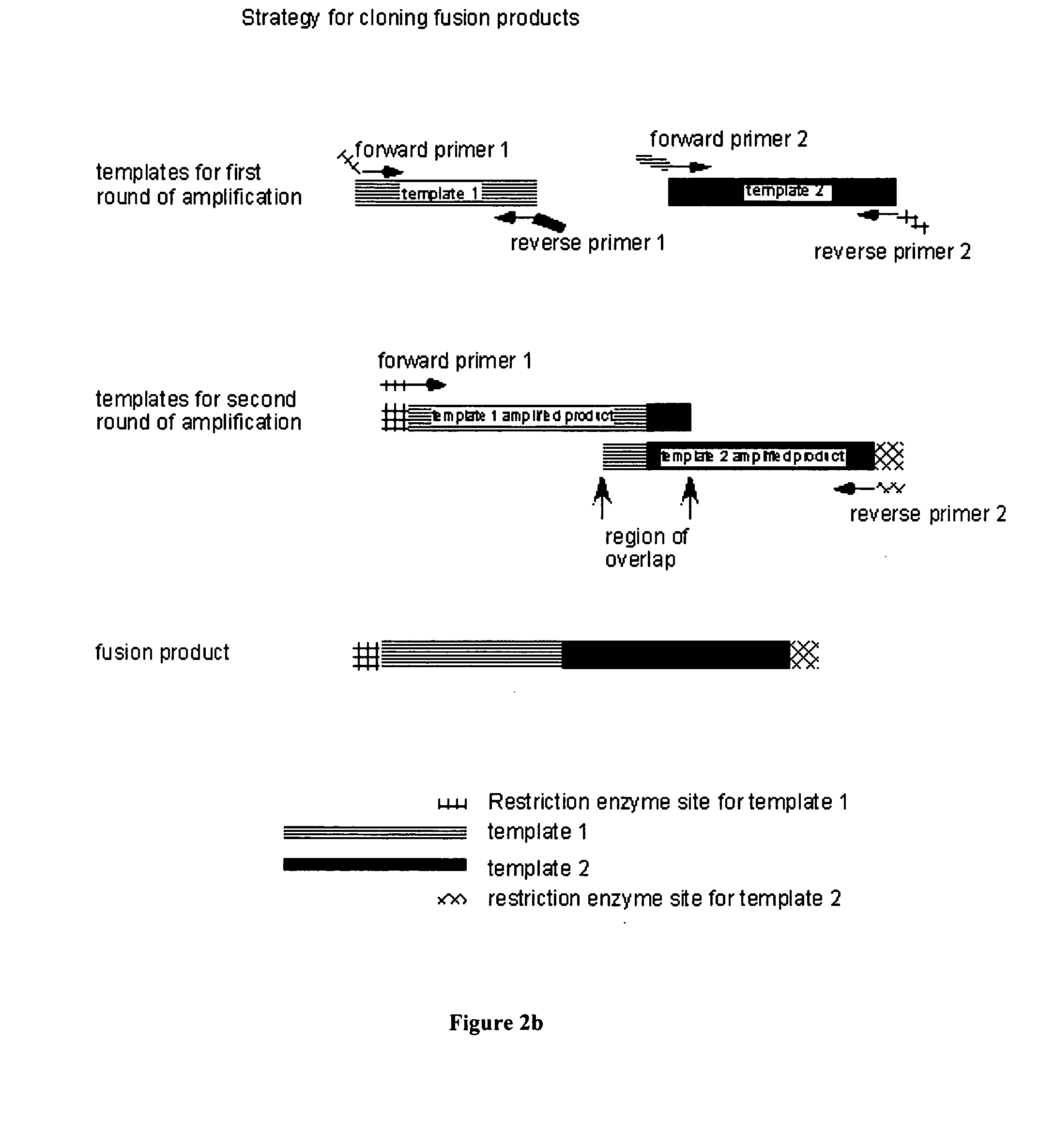Altering levels of anti-nutrient factors in plants
a technology of plant antinutrient factors and plant odour, which is applied in the direction of lyase, carbon-nitrogen lyase, transferase, etc., can solve the problems of serious growth and reproduction problems, poor palatability of livestock and fish, and odour of fishy eggs, so as to reduce the level of one or more, reduce or eliminate the effect of expression
- Summary
- Abstract
- Description
- Claims
- Application Information
AI Technical Summary
Benefits of technology
Problems solved by technology
Method used
Image
Examples
example 1
Sinapine
Estimation of Gene Copy Numbers in Arabidopsis
[0185] Gene copy number is an important factor that needs to be considered when analyzing knockout mutants. Our analysis revealed that, with the exception of phenylalanine ammonia lyase (PAL), all other enzymes in the phenylpropanoid pathway are encoded by single copy genes in the Arabidopsis genome. Table 1 lists names of genes, their estimated copy numbers and T-DNA insertion mutants used below.
TABLE 1Genes involved in the phenylpropanoid pathway, their estimated copynumbers and Arabidopsis knockout mutants analyzed.1copyGenenumberKnockout lines analyzedPAL (Phenylalanine ammonia32SALK70702, SALK92252lyaseC4H (Cinnamate 4-hydroxylase13SK16293C3H (Coumarate 3-hydroxylase)1SALK36132, SALK1122823COMT(Caffeic acid1SALK2373, SALK20611O-methyltransferaseFAH (Ferulic acid hydroxylase)1SALK 63792SCT (sinapoylglucose:1SALK2255, SALK18120choline sinapoyltransferase)
1Gene copy numbers were estimated using the BioVis software (see bra...
example 2
[0215] Chemical analysis of seeds of Arabidopsis mutants deficient in the phenylpropanoid pathway (FIG. 1) revealed that knockouts in certain genes in the pathway resulted in moderate reductions in lignin content. B. napus lines were developed with impaired expression of several of the genes involved in lignin biosynthesis, including caffeic acid O-methyltransferase (COMT), ferulic acid hydroxylase (FAH), S-adenosylmethionine synthase (SAMS), cinnamic acid 4-hydroxylase (C4H) and coumaric acid 3-hydroxylase (C3H), 4-coumarate ligase (4CL), cinnamoyl CoA reductase (CCR). These genes were used either alone, or together as gene fusions, employing RNAi and anti-sense (AS) technologies to determine if reduced levels of lignin in plants expressing these constructs may be produced.
Constructs
Cruciferin::COMT RNAi (p72-123)
[0216] The cruciferin promoter was PCR amplified using forward primer:
cruc-F3 (containing BglII (bold underlined) andHindIII (bold italics) restriction sites...
example 3
Phytate
[0236] Analysis of seeds of Arabidopsis mutants with knockouts in genes affecting phytate biosynthesis (FIG. 14) revealed that knockouts in individual genes caused only moderate quantitative reduction in phytate levels, due to the high copy numbers of most genes (Table 4). Without wishing to be bound by theory, significant reduction in levels of phytate may require down-regulating entire gene families simultaneously.
TABLE 4Genes involved in the phenylpropanoid pathway, their estimated copynumbers. Gene copy numbers were estimated using the BioVissoftware (www.brassica.ca) set to a homology threshold of 80%.Estimated geneGenecopy number1-phosphatidylinositol-4,5-bisphosphate3phosphodiesterase (PIBP PDE)phosphatidylinositol phophatidylcholine transfer12protein (PI / PC TP)inositol 1,3,4-trisphosphate 5 / 6-kinase (IP3K)1inositol polyphosphate 5-phosphatase II (IPP)2phosphatidylinositol-4-phosphate 5-kinase (PIKa)9CDP-diacylglycerol—inositol 3-2phosphatidyltransferase (phosphatid...
PUM
| Property | Measurement | Unit |
|---|---|---|
| digestibility | aaaaa | aaaaa |
| pH | aaaaa | aaaaa |
| homology threshold | aaaaa | aaaaa |
Abstract
Description
Claims
Application Information
 Login to View More
Login to View More - R&D
- Intellectual Property
- Life Sciences
- Materials
- Tech Scout
- Unparalleled Data Quality
- Higher Quality Content
- 60% Fewer Hallucinations
Browse by: Latest US Patents, China's latest patents, Technical Efficacy Thesaurus, Application Domain, Technology Topic, Popular Technical Reports.
© 2025 PatSnap. All rights reserved.Legal|Privacy policy|Modern Slavery Act Transparency Statement|Sitemap|About US| Contact US: help@patsnap.com



